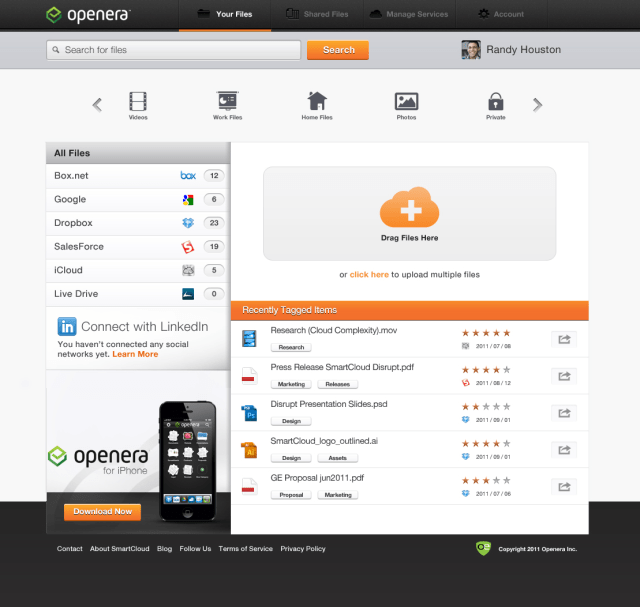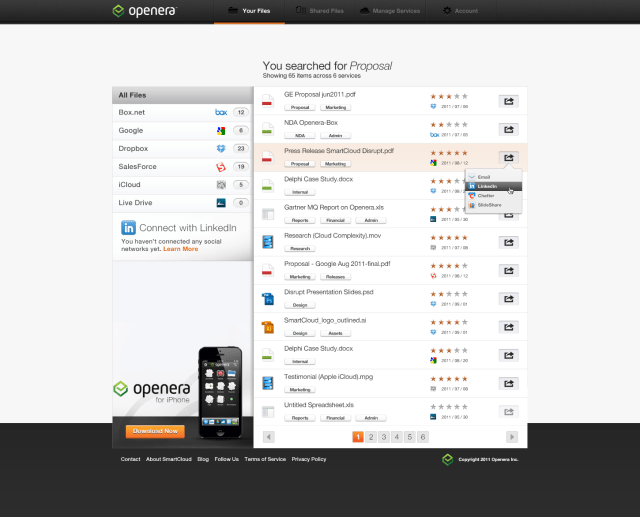Openera, an Ottawa-based startup which automatically moves email attachments into cloud services like Google Drive, Dropbox, Evernote, Salesforce and more, has raised $250,000 in seed funding, which the CEO Peter Lalonde jokes is “equal in significance to raising about a million if we were raising in the U.S.” He may be right – the company has been winning pitch competitions all across Canada for its service, which could be characterized as something like a IFTTT for the enterprise.
You may have heard that slogan applied before to a Y Combinator-backed startup known as Zapier, which more fully embraces the IFTTT model of triggering actions based on connections between two different cloud services. Openera, meanwhile, focuses for now only on connecting email to the cloud, and specifically, email attachments.
The system works with Gmail/Google Apps, Microsoft Exchange, or any other IMAP-connected email. With user- or I.T.-defined rules, it looks for specific attachments and moves them into online services, accordingly. Emails can be sent to Dropbox, Box, SkyDrive, Google Drive and Evernote. In addition, an open API allows it to also connect with other services behind the firewall like SharePoint, for example.
The company was founded by Peter Lalonde (CEO) and Marc Lennox (CTO), who each have a history of enterprise experience under their belts. Lalonde previously worked at IBM, OpenText, GridIron (FileTrek) and elsewhere, while Lennox co-founded and grew the aviation maintenance management software company MXI Technologies to a $40 million business before its recent exit earlier this year.
Lalonde says he was inspired to start Openera based on his own experience at OpenText. “I realized that our main competitor wasn’t Documentum, IBM or Microsoft,” he says, “it was the users, and users not putting files where they should be. Our users wouldn’t adopt, and if they wouldn’t adopt the project would typically fail,” he adds. “Content management relies on people putting the content into the content management system.”
The system users actually seemed to prefer using, of course, is email. “People tend to follow the path of least resistance, and they resist change. So what if rather than changing user behavior, we could extract value from it?” he thought to himself. “I looked at existing user behavior, and existing user behavior is email.”
The problem with content management systems today is that it’s the company that cares where the files are, not the users. They’re not motivated to move them to the right repositories when they know how to find them in their inbox. But the larger a company grows, the more pressing the need is to locate and organize corporate documents – especially for compliance purposes.
That’s where Openera comes in. There are no limitations on the file types supported or file size. It doesn’t work via plugin or by CC:’ing a specific address when emailing files around, as some startups have done in the past (like CC:Betty, for example, before pivoting). Plugins and CC:ing require user adoption; Openera doesn’t. Although users are welcome to sign up and configure their own rules, Openera authenticates on the server-side so an I.T. admin could instead create rules that work across an organization.
These rules can be very granular, too. It’s not as simple as saying “Word docs go here.” Instead, rules are customized by looking for keywords in file names, subject lines, based on where the email originates (e.g. From the “lawyers?” Then put in “Legal” folder in SharePoint), and more. The goal is to allow a high level of complexity when it comes to this rule-setting, but to hide that complexity from the user.
In terms of user privacy, Lalonde explains that the company isn’t reading or storing emails on its servers, it’s only using its algorithms and rules to move files from one medium to the next. In addition, when users configure their own rules, everything is set to “private” by default on their various cloud services. However, in the case of corporate emails, where content within the email may also be relevant to the matter at hand, the company is testing out various approaches to attach the email text alongside the uploaded file. This could be as a PDF of the email, or comments in the file description, or something else. The functionality works, but Openera is talking with customers to determine the best way to implement this.
In addition to the organizational aspects of the service, Openera also offers a file search functionality online and on mobile, via its iPhone app. An Android version is in the works.
Lalonde declined to provide user numbers or other metrics, given that the company only launched into a public beta this fall, however he says that it’s “growing quickly.” As for the $250,000, the funding was led by BDC, and includes participation from other, primarily Canadian, angel investors. The funding is a part of a larger, $750,000 round still in progress.
Despite the earlier joke about the size of the initial funding, Lalonde believes it will go well. “The enterprise is getting hot right now – which I find kind of funny, because I never thought of the enterprise as hot – but that’s where the money is right now. We’re well-positioned here.”



